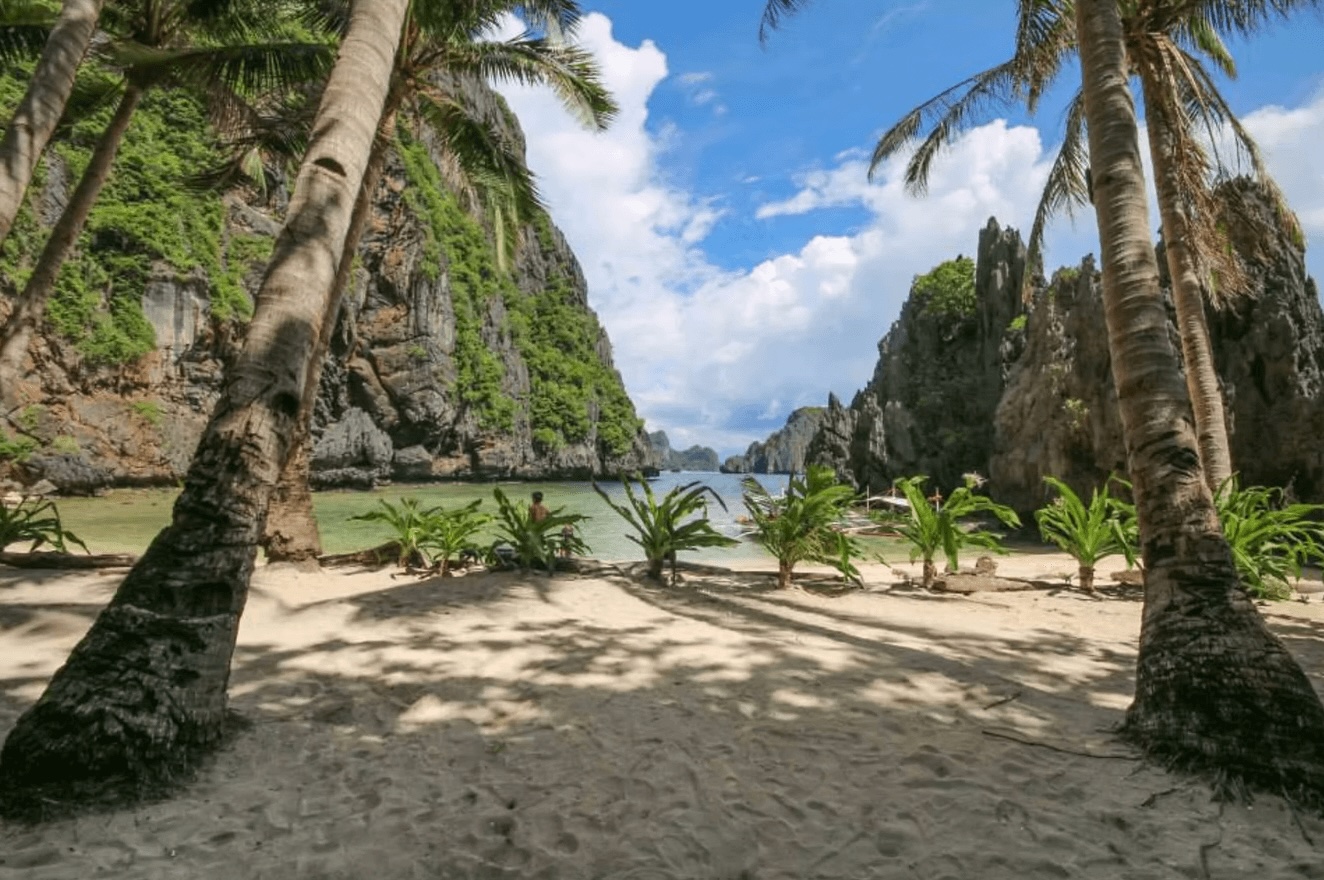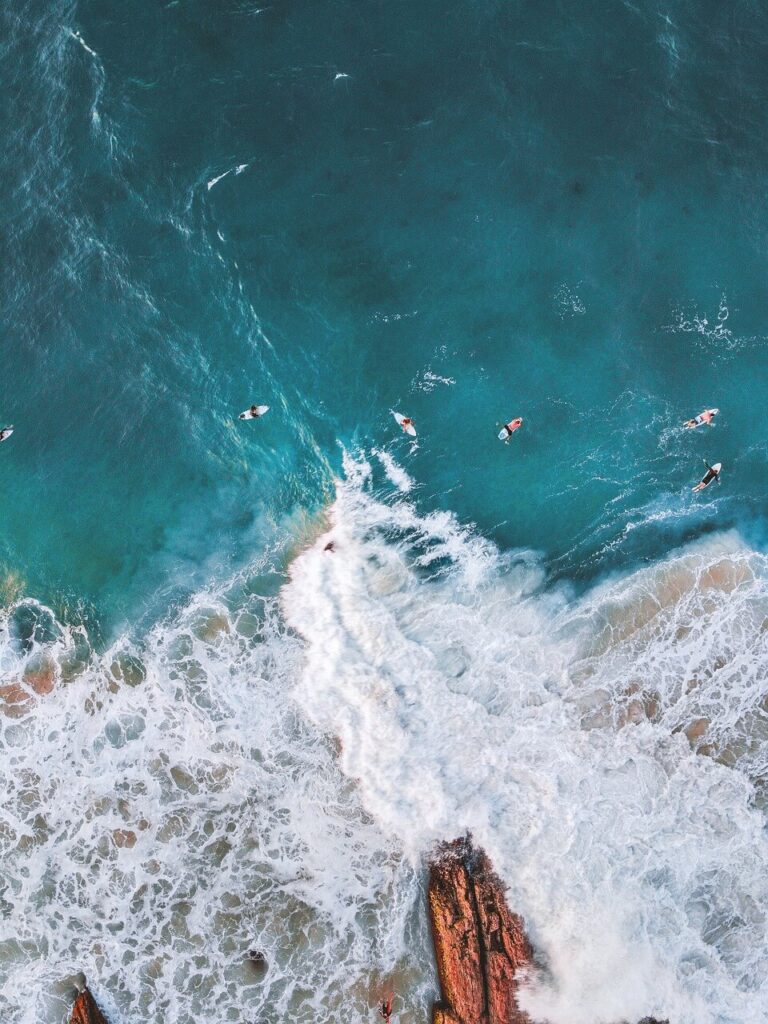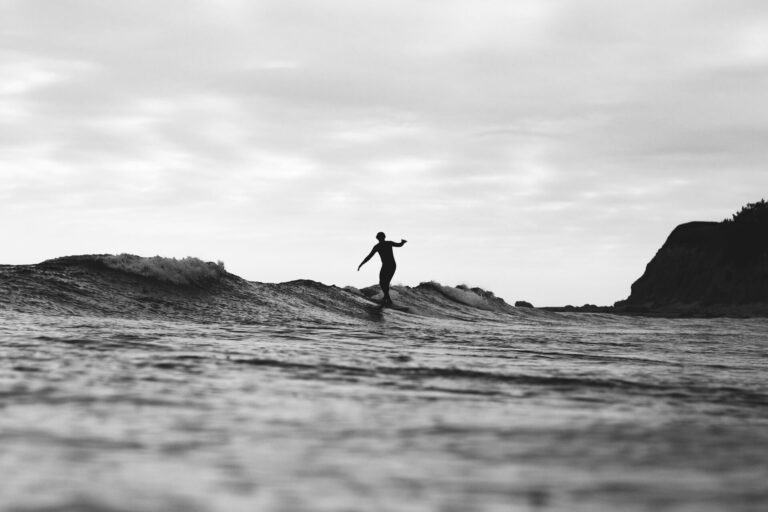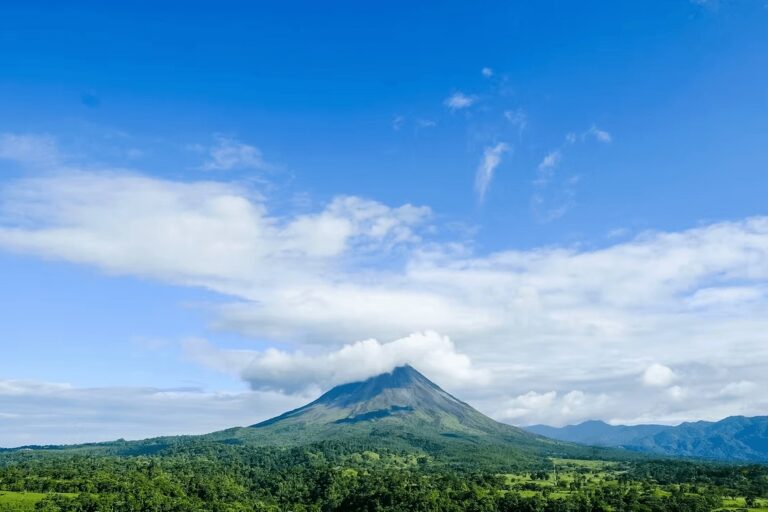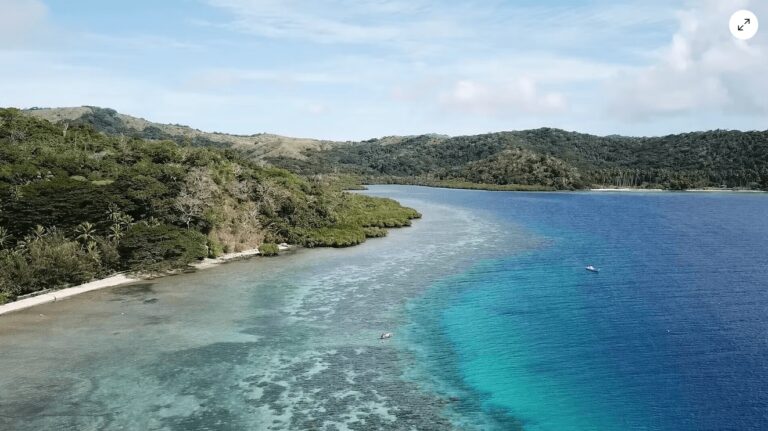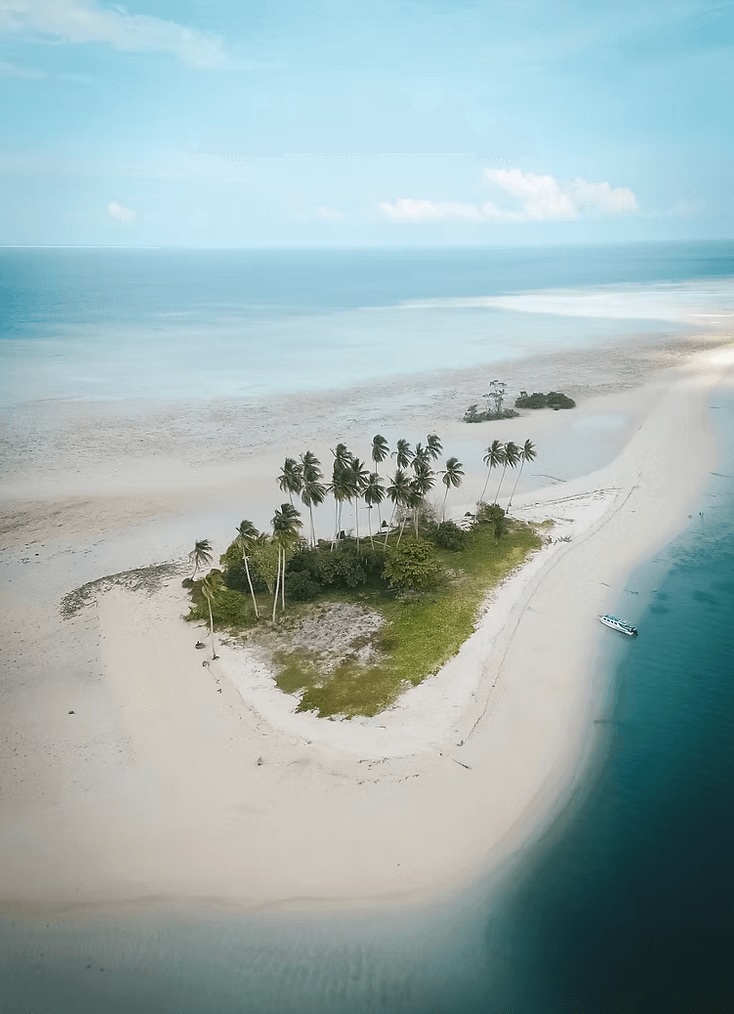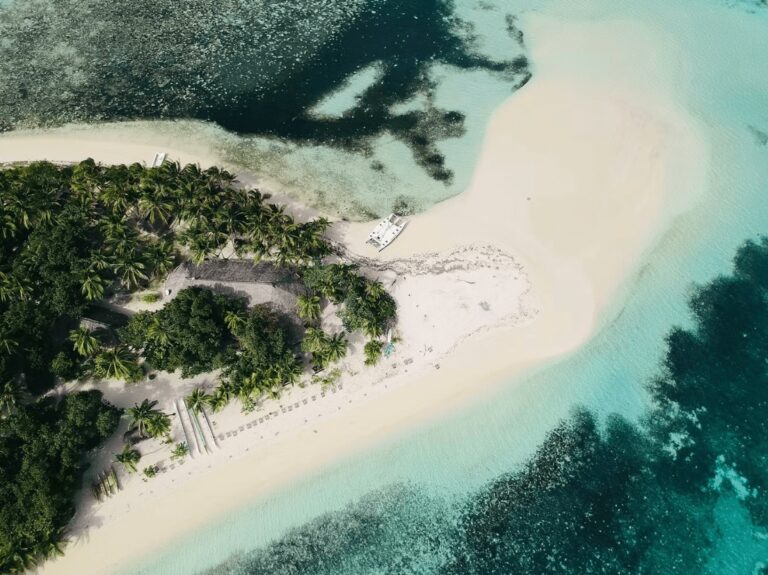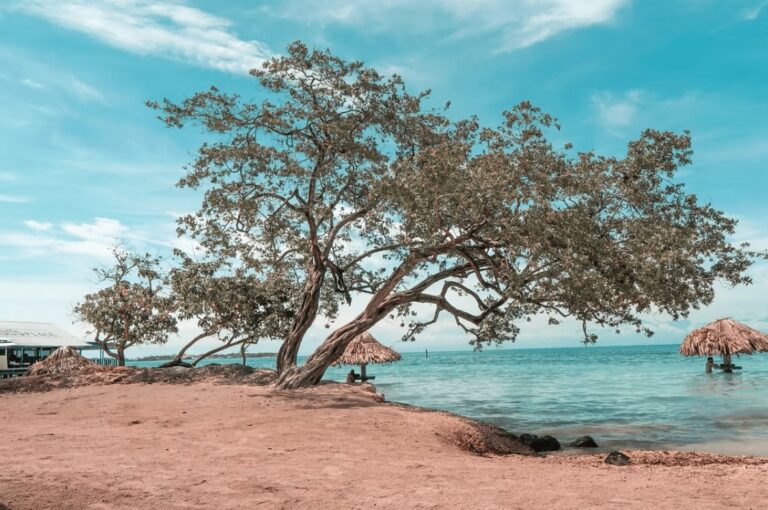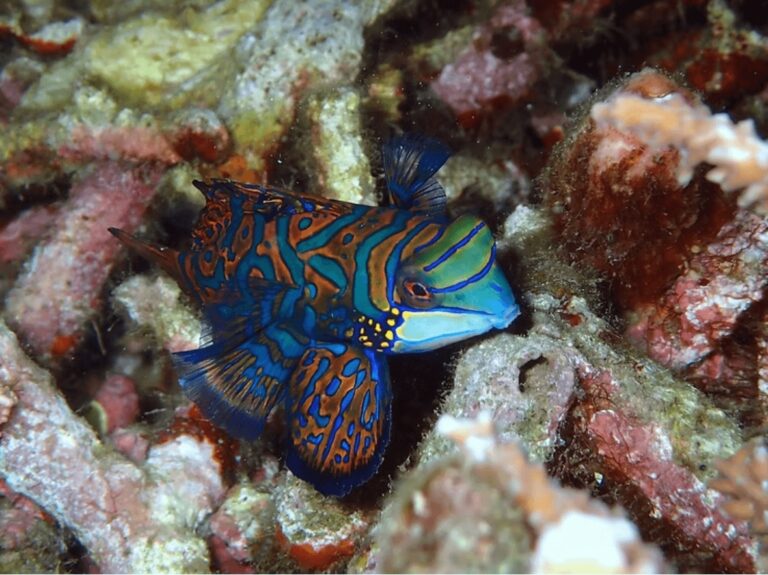Scuba diving in the Philippines: Best dive spots
Planning a dive trip to the Coral Triangle? Discover everything you need to know about scuba diving in the Philippines, including the best dive sites and eco-friendly places to stay.
Located within the Indo-Pacific’s Coral Triangle, the Philippines encompasses over 7,000 islands. Collectively, they serve as the backdrop for some of the world’s most spectacular scuba diving.
This island nation is a treasure trove for adventurous divers, offering an incredible diversity of marine life and habitats to explore.
From the kaleidoscopic coral gardens to the chance encounters with manta rays and whale sharks, the Philippines has something for everyone. Abundant wrecks dot the seafloor and the macro life is nothing short of spectacular, attracting underwater photographers.
But the Philippines’ allure extends beyond just its world-class diving. The country’s renowned hospitality and abundance of luxurious (yet affordable) dive resorts and liveaboards ensure an epic dive vacation.
Whether you’re a seasoned diver seeking to tick off bucket-list creatures or a newbie looking to be wowed by the underwater world, the Philippines promises to deliver.
In this article, discover everything you need to know about scuba diving in the Philippines. We’ll highlight the best places to dive in the Philippines + eco-friendly dive resorts and hotels for a sustainable scuba vacation.
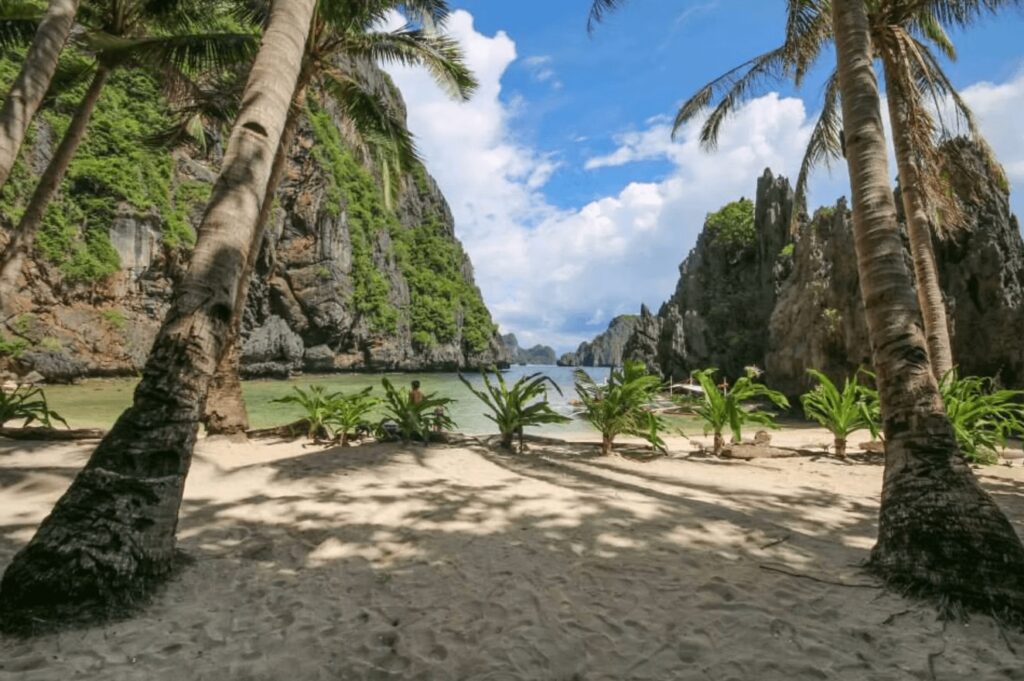
This article contains affiliate links, which means when you make a purchase through that link, we earn a small commission. Affiliate links come at no cost to you and ensure our content remains free!
Coron
Best place for wreck diving in the Philippines
Located in the far north of Palawan, Coron Bay boasts some of the Philippines’ best wreck diving sites. This picturesque region is home to a treasure trove of World War II shipwrecks that have become thriving artificial reef ecosystems, home to a diverse array of fascinating marine life.
In September 1944, a U.S. air raid sank 11 Japanese warships that were harboured in Coron Bay. This left behind a sunken graveyard that has become a unique diving attraction.
Today, these wrecks serve as habitats for everything from schools of colourful reef fish to curious cuttlefish and even the occasional reef shark or stingray.
A particular highlight is the Okinawa Maru, a 160-metre (525-foot) wreck. It sits at a beginner-friendly depth of just 10 metres (32 feet). The Tangat Gunboat is another easily accessible wreck dive with plentiful fish life.
Beyond the wrecks of Coron, the Palawan region also encompasses the stunning dive sites of El Nido, known for their abundance of turtles.
Getting to Coron
Coron can be accessed via a one-hour flight from Manila to Busuanga, followed by a 45-minute van ride or private transfer. Alternatively, regular ferries make the 13-hour trip from Manila to Coron.

Eco-friendly dive resorts in Coron
Sangat Island Dive Resort
Situated at the southwestern edge of Sangat Island is this eco-friendly Coron dive resort. It features 22 bungalows and villas designed with thatched roofs and woven bamboo walls that harmonise with the surroundings.
Sangat Island Dive Resort functions independently from the grid. It utilises solar panels to produce sufficient energy for all operations, including the freshwater desalination system.
“This hotel is a magic place.” – Owca (read more reviews here)
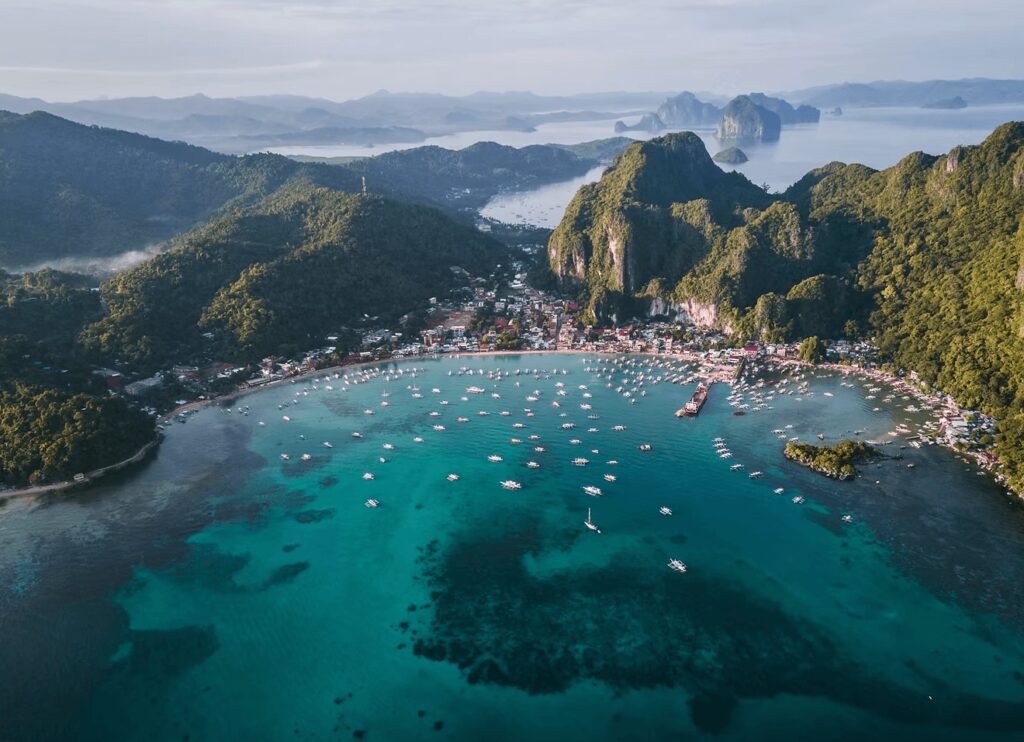
Damaguete
Best place to dive in the Philippines for whale sharks
Situated on Negros Island, Dauin is a picturesque stretch of coastline just 20 minutes’ drive from Damaguete. It’s renowned for its exceptional muck diving, with an abundance of unique critters and small marine life to discover. Additionally, it offers access to magnificent coral reefs teeming with fish.
It’s hard to talk about Dauin without mentioning its whale shark encounters, with it possible to snorkel alongside these gentle giants on guided trips.
What really sets Dumaguete apart are the luxurious beachfront dive resorts that dot the coastline. Many provide travellers with eco-friendly facilities and creature comforts at relatively affordable prices.
It’s an ideal destination for diving families or groups of friends with diverse interests. Many of the sites have coral reefs located directly alongside muck diving spots.
From the schooling jacks and turtles of Apo Island to the crabs, frogfish and nudibranchs found along the Dauin coast, this region offers a one-of-a-kind diving adventure. There really is something for all scuba enthusiasts, whether you’re a newcomer, a seasoned pro or a keen underwater photographer.
Getting to Damaguete
Damaguete is a 45-minute flight from Manila, with most dive resorts offering complimentary airport transfers.
Planning a surf trip to the Philippines? Discover 7 eco-friendly places to stay in Siargao.
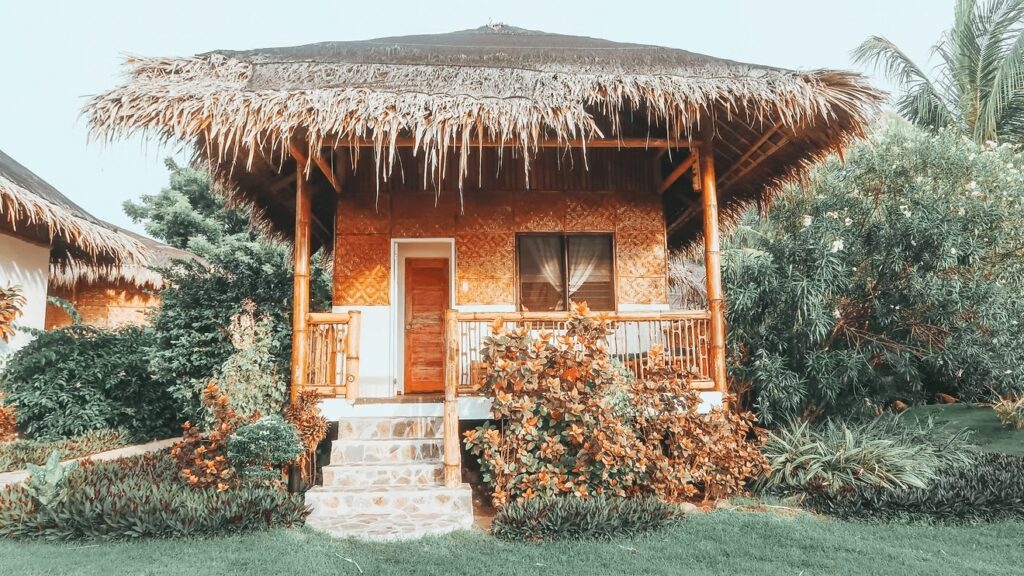
Eco-friendly dive resorts in Damaguete
Liquid Dive Resort
Liquid Dive Resort features just a handful of charming bamboo cottages strung along the beach. This eco-conscious Damaguete resort stands out for its commitment to sustainability, eliminating single-use plastics, offering reusable water bottles and using biodegradable materials.
Additionally, they organise regular cleanups to preserve the beauty of the beach and reef. Liquid Dive Resort in Dauin is proud to be a Green Fins member and recipient of the esteemed PADI Green Star Award.
“Worth every penny!” – Maya (read more reviews here)
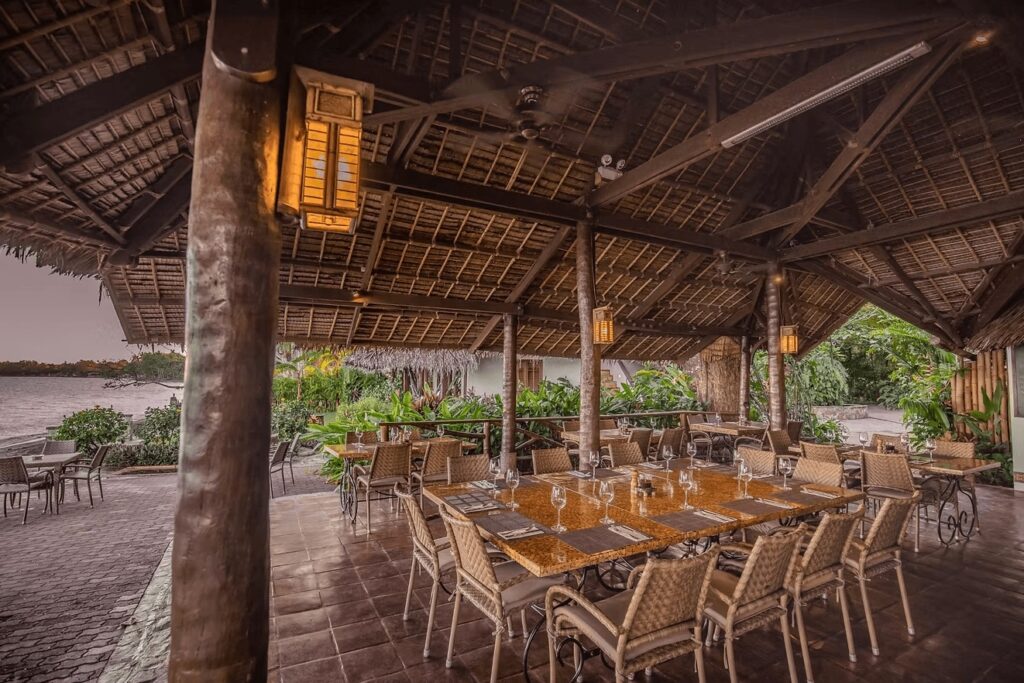
Atlantis Dive Resort Dumaguete
Atlantis Dumaguete isn’t just a starting point for underwater exploration, it’s an eco-friendly resort designed specifically for divers. There are 44 comfortable rooms surrounded by beautiful gardens and ponds, along with a restaurant and bar right by the water.
After a day of diving, you can relax by the pool or treat yourself to a spa experience.
“Fantastic dive resort with excellent staff..” – Massimo (read more reviews here)

Moalboal
Best place to dive a sardine run in the Philippines
Located on the west coast of Cebu, Moalboal hosts a world-famous Sardine Run. It’s a breathtaking natural spectacle that draws divers and snorkellers from around the globe.
Imagine millions upon millions of shimmering sardines swirling and pulsing in a massive, undulating bait ball. Estimates suggest up to 7 million of these tiny fish congregate at Panagsama Beach, creating a sensory overload for those lucky enough to witness this incredible natural phenomenon.
Additionally, the region’s diverse dive sites include everything from dramatic walls and canyons to colourful soft coral gardens. Pescador Island is particularly renowned as one of the best places to dive in the Philippines. Its magnificent wall is adorned in vivid soft corals.
Other scuba diving highlights in Moalboal include the Talisay Wall, a beautiful sloping reef with plentiful caves to explore. Most dive resorts in Moalboal also head out to Tuble Reef, known for its magnificent sea fan corals and cavernous swim-throughs.
Getting to Moalboal
Cebu is the international gateway to Moalboal and receives regular flights from Manila. From the airport, it’s around three hours’ drive to Moalboal, with most dive resorts offering transfers.

Eco-friendly dive resorts in Moalboal
Quo Vadis Dive Resort
Quo Vadis is an eco-friendly dive resort in Moalboal that’s dedicated to adventure and sustainability. It has also been awarded as a PADI five-star scuba diving destination.
The rooms and suites are adorned with Batik fabrics and locally sourced wooden furnishings, while still offering modern amenities like air-conditioning.
Quo Vadis proudly collaborates with local marine conservation groups to help preserve the surrounding marine ecosystems.
“We had an amazing time.” – Arjan (read more reviews here)
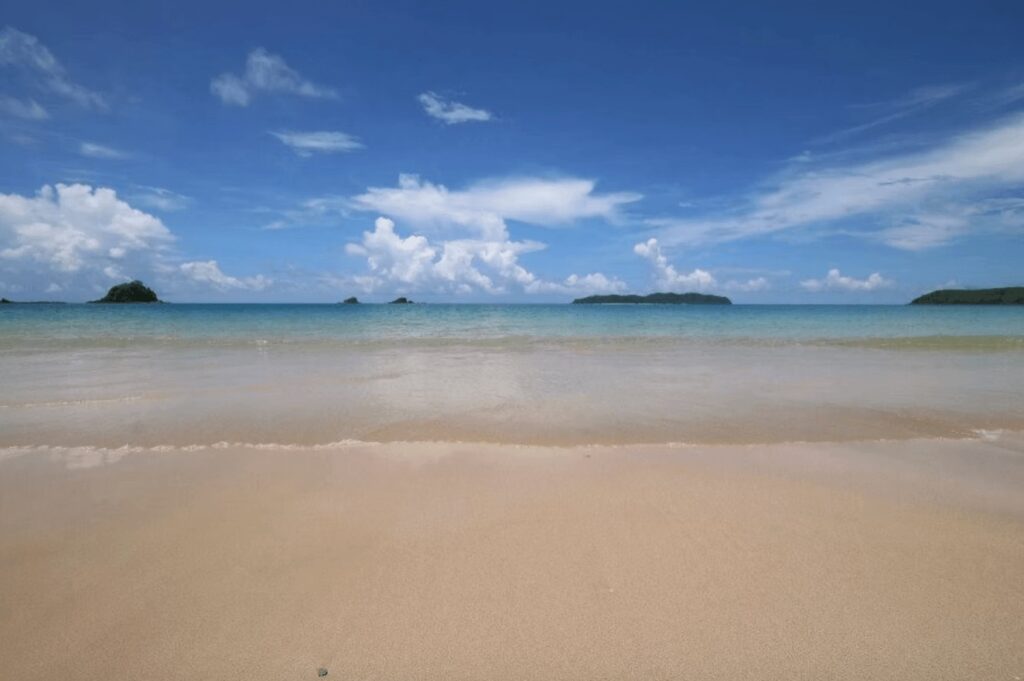
Malapascua
Best place to dive with thresher sharks in the Philippines
Though the island of Malapascua is small in size, it offers incredible underwater explorations and wildlife encounters.
This tiny oasis off the northernmost tip of Cebu Island is renowned as the best place on the planet to consistently spot thresher sharks. These elusive creatures are the island’s main draw, luring divers from around the globe to Malapascua’s milky-white beaches.
At Monad Shoal, thresher sharks are sighted with remarkable regularity. They often their appearance at sunrise as divers patiently wait at around 25 metres depth.
The sharks are drawn to this particular cleaning station, where small fish groom the larger predators. It’s a breathtaking sight to behold, as the normally shy thresher sharks swim back and forth at this “underwater beauty salon”.
But Malapascua has much more to offer beyond just its famous shark encounters. The island’s shallow reef systems boast a diverse array of macro marine life, making it a dream destination for underwater photographers.
From colourful nudibranchs and camouflaged scorpionfish to mating cuttlefish, Malapascua offers exceptional marine life encounters.
Getting to Malapascua
Cebu is the international gateway to Malapascua and receives regular flights from Manila. From the airport, it’s around 2.5 hours’ drive to the harbour before a 30-minute boat ride to Malapascua Island.

Eco-friendly dive resorts in Malapascua
Evolution Dive & Beach Resort
As one of Malapascua’s leading dive centres, Evolution is an intimate Philippines dive resort that’s staunchly committed to eco-friendly practices. As proof of its efforts, it has been named one of the Top 10 Green Fins members worldwide for three consecutive years.
This translates into sustainable operations that minimise environmental impact through renewable energy, responsible waste management and promotion of conservation.
“Superb dive trip and stay.” – Jerome (read more reviews here)
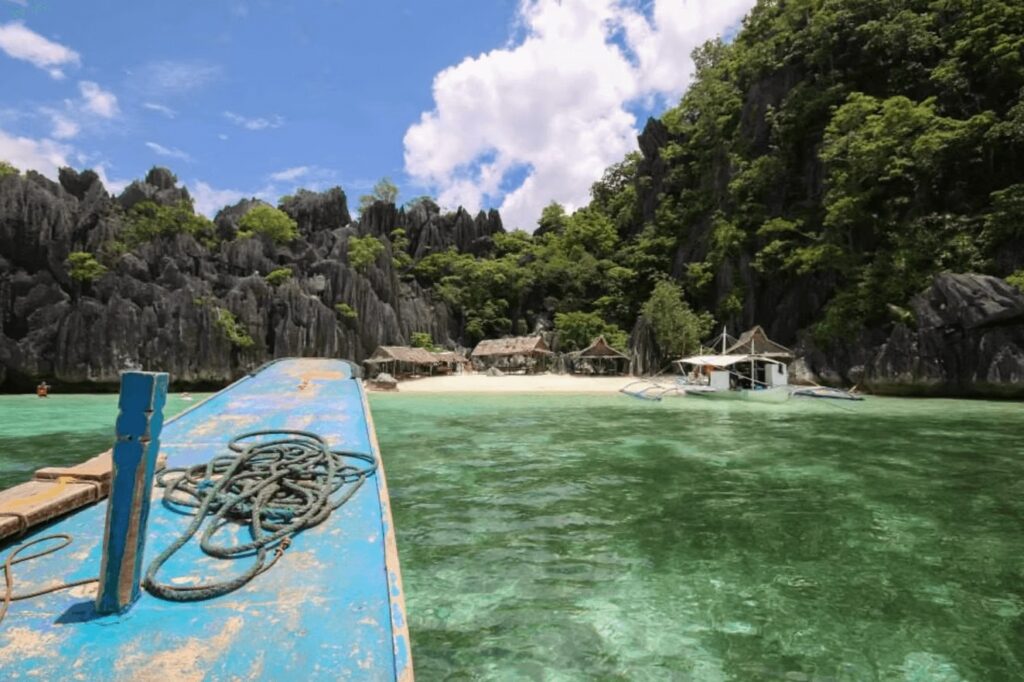
Puerto Galera
Best place in the Philippines for diverse dive experiences
Situated along the northern coast of Mindoro Island, Puerto Galera is notable for its marine biodiversity and topside scenery.
Above the waves, Puerto Galera enchants with its relaxed seaside ambiance, complete with lively restaurants and piers perfect for sundowner cocktails. Beneath the surface, there’s an astonishingly diverse array of dive sites to explore.
Within a short boat ride from shore, you’ll discover an incredible world of macro-life, from schools of anthias to camouflaged frogfish and reef octopus. For wide-angle aficionados, the Verde Island passage boasts reefs adorned with magnificent soft corals and gorgonian sea fans.
Thrill-seekers can test their skills against the strong currents of the Canyons while wreck enthusiasts can uncover the fascinating histories of the Sabang Wrecks.
No matter your diving preferences, Puerto Galera offers a diversity of experiences, catering to beginners and seasoned scuba enthusiasts alike.
Getting to Puerto Galera
Puerto Galera is around an hour by ferry from Batangas Pier, which is itself a two-hour drive from Manila. Most dive resorts can arrange round-trip transportation on request.
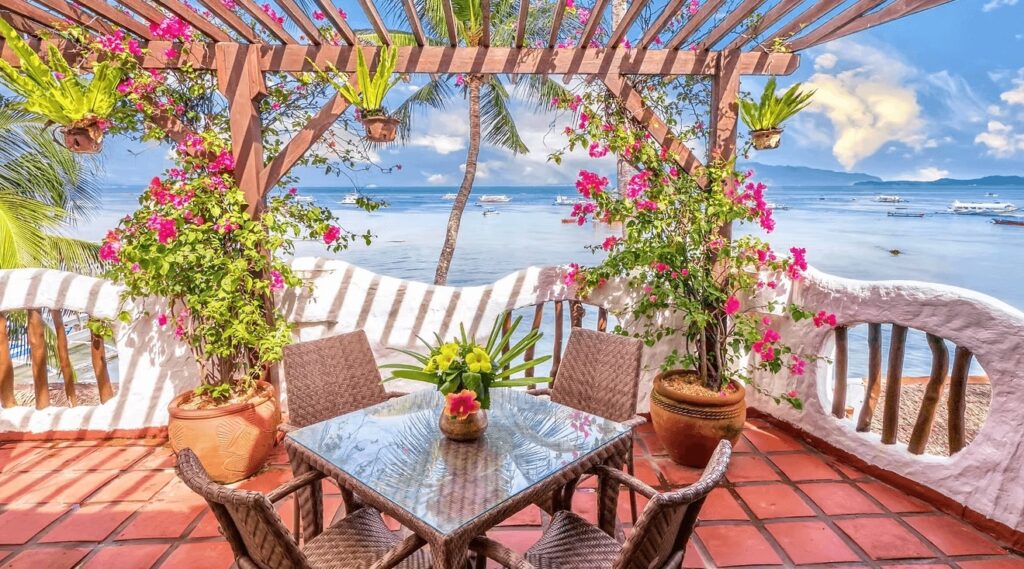
Eco-friendly dive resorts in Puerto Galera
Atlantis Dive Resort Puerto Galera
Nestled amidst picturesque hills with a view of Sabang Beach, this eco-dive resort in Puerto Galera seamlessly integrates with its surroundings. Atlantis not only focuses on preserving the environment but also on educating and supporting local youth through various programs.
Their coral nursery aids in restoring damaged reef systems and their training programs empower staff to protect the ocean.
“A wonderful weekend away from Manila.” – Gwyn (read more reviews here)
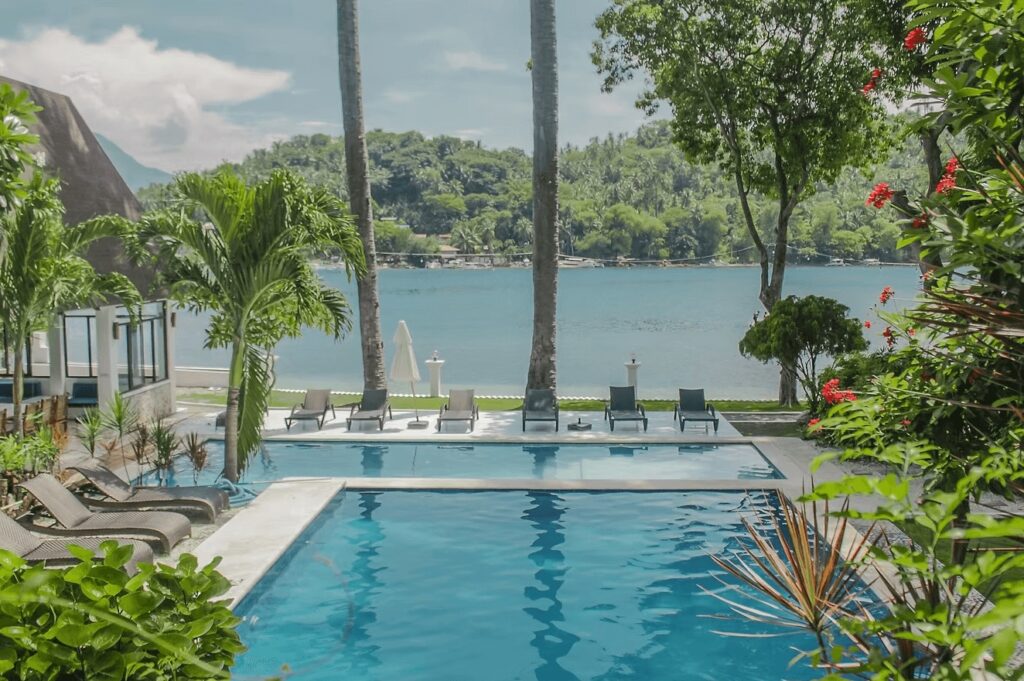
Casalay Boutique Villas & Dive Resort
Casalay is committed to protecting Mindoro’s ecosystems by implementing a range of sustainable initiatives. This includes using solar panels to reduce energy consumption and implementing policies to minimise plastic waste.
This eco-friendly Puerto Galera dive resort also collaborates with local marine conservation organisations to encourage responsible diving and support reef restoration efforts. It offers a selection of well-designed one and two-bedroom villas suitable for solo travellers, couples and families with children.
“Luxury stay at an affordable price.” – Rachel (read more reviews here)
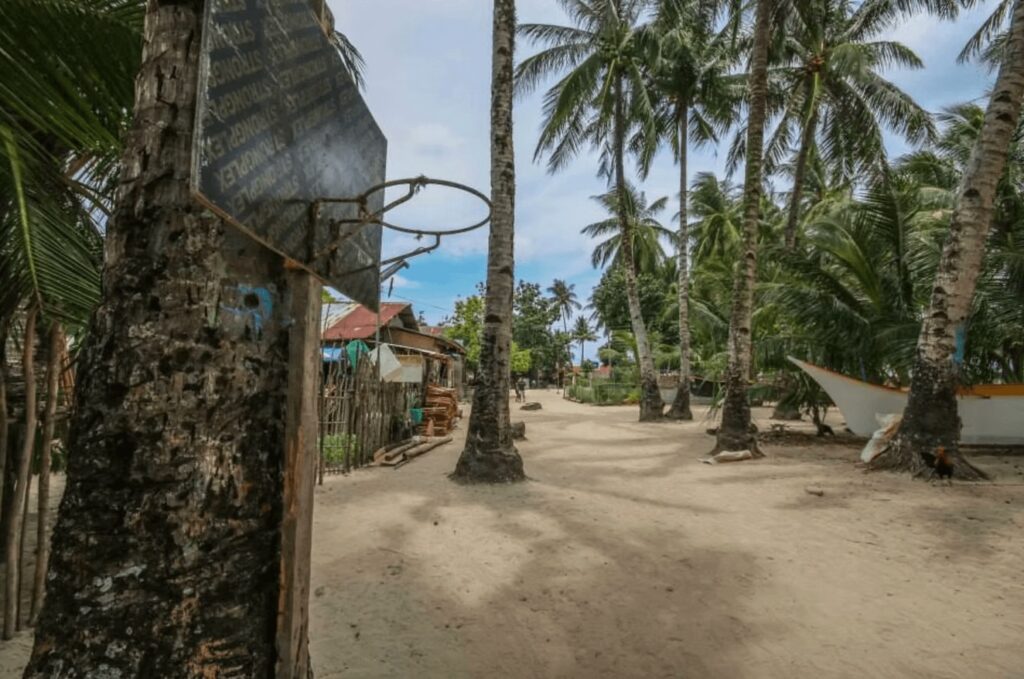
Ticao Pass
Best place to dive in the Philippines for manta rays
Located off the coast of Donsol, Ticao Pass is an expansive shoal, covering seven hectares of flat, sandy seabed. It’s often referred to as the “Manta Bowl” and for good reason.
The nutrient-rich waters here are a magnet for manta rays, which flock to this site to take advantage of the constant, flowing current and plentiful plankton. With their broad, wing-like pectoral fins and elegant, somersaulting movements, mantas congregate at Ticao Pass both to feed and to have their skin cleaned by small fish.
The best time of year to witness this underwater ballet is between December and May when the mantas are most active in these waters.
The Manta Bay also occasionally plays host to other impressive marine life, including whale sharks, hammerhead sharks and tiger sharks. All are drawn to the area’s abundant food sources and favourable conditions.
Getting to Ticao Pass
Ticao can be accessed by ferry from Masbate, which receives regular flights from Manila.
Eco-friendly dive resorts in Ticao Pass
Ticao Island Resort
While the beachfront cabins here are basic, it’s the magnificent setting of this eco-friendly Ticao Pass resort that are its main draw. It’s the perfect place to disconnect while experiencing the exceptional underwater life of Donsol.
The onsite dive centre is run by a friendly team of professionals and boat drivers.
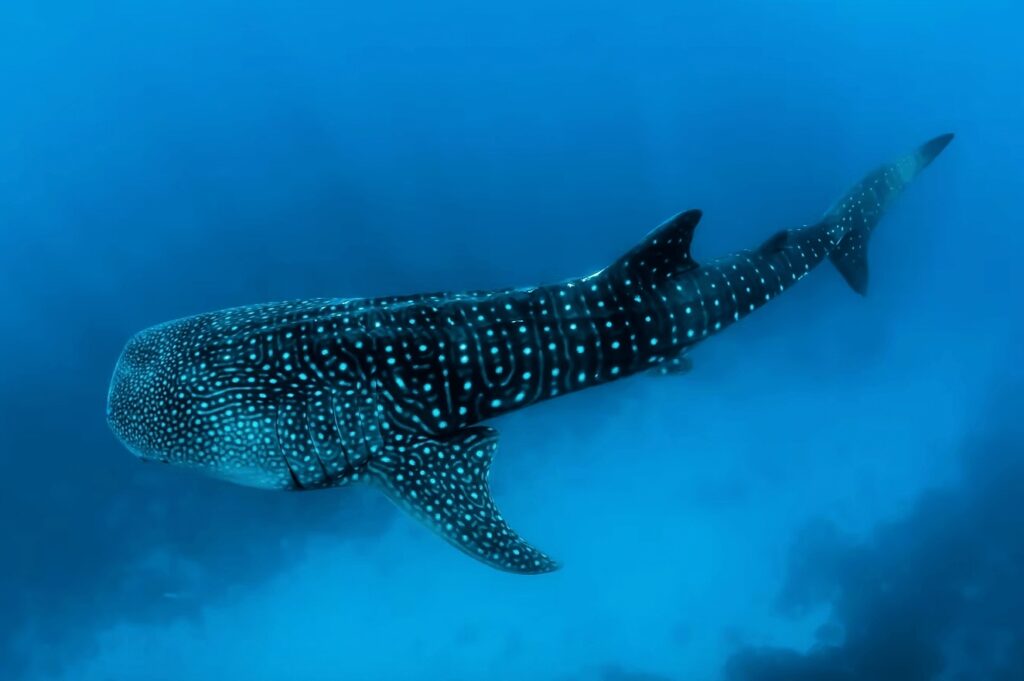
Tubbataha Reefs Natural Park
Best place for a liveaboard trip in the Philippines
Surrounded by the Sulu Sea, Tubbataha Reefs Natural Park is a UNESCO World Heritage Site.
Often hailed as the best diving destination in the Philippines, Tubbataha is an underwater wonderland. It boasts kaleidoscopic corals, huge schools of fish and a dazzling array of large pelagic species.
Located at the very epicentre of the Philippines’ marine biodiversity, this atoll is home to no fewer than 600 species of fish and over 360 species of coral. Not only that but 11 species of sharks have been recorded here, including tiger sharks, whitetips and whale sharks.
Dolphins and whales also frequent these waters. Meanwhile, the reefs provide vital nesting grounds for both hawksbill and green sea turtles.
But the wonders of Tubbataha extend far beyond its large pelagics – this is also a realm of the small and strange. Here, everything from ghost pipefish to fanciful frogfish and delicate nudibranchs are able to thrive.
Due to the remote setting of Tubbataha Reefs Natural Park, this is one Philippines’ dive destinations that is best explored by liveaboard.
Getting to Tubbataha Reefs Natural Park
Most liveaboard trips to Tubbataha Reefs depart from Puerto Princessa, which is a one-hour flight from Manila.
For more information about diving Tubbataha Reefs Natural Park, check out our detailed article here.
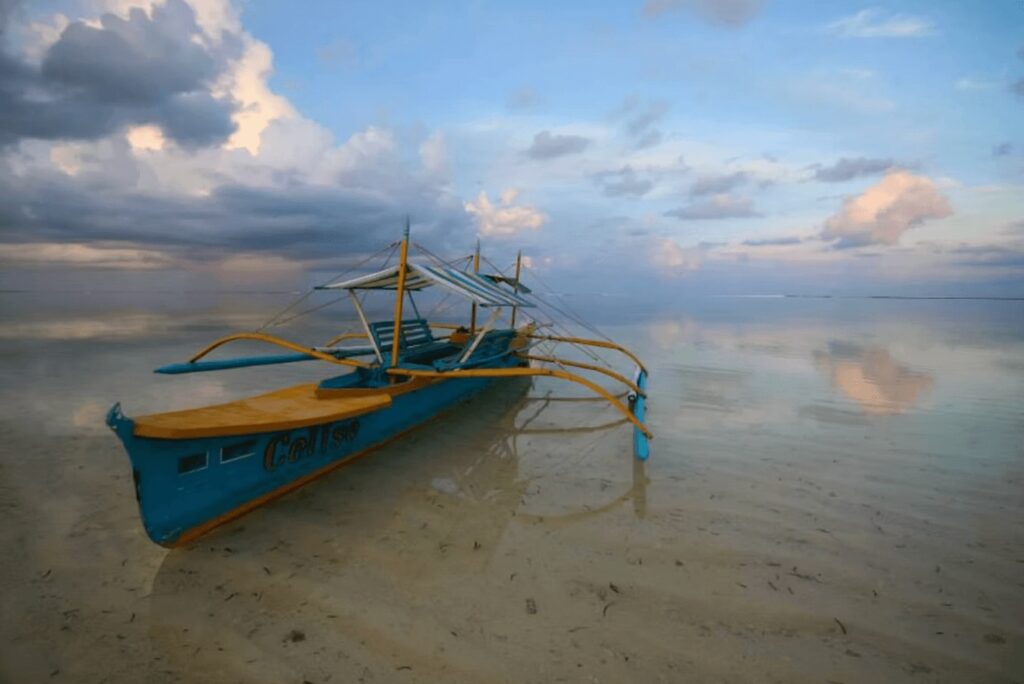
Anilao
Best place for muck diving in the Philippines
The diving around Anilao is fantastic, with a wealth of exceptional macro and wide-angle dive sites to explore.
It’s an underwater photographer’s paradise, boasting an incredibly diverse array of rare and captivating small-scale critters. They have made Anilao a bucket-list location for anyone serious about exploring the macro realm.
At the top of the list is Secret Bay, also known as Manit Muck. It is widely regarded as one of the best muck diving sites in the Philippines. Here, there is the potential to spot an astounding array of rare and exotic critters, from mimic octopus and enigmatic wonderpus to delicate pipefish and camouflaged frogfish.
Another highly sought-after dive site in Anilao is The Pier, which is a perennial favourite due to its annual macro photography workshops.
For those seeking a more diverse diving experience, Twin Rocks offers the best of both worlds. There’s a stunning array of macro subjects as well as breathtaking wide-angle opportunities, thanks to its soft corals and abundance of small reef fish.
Getting to Anilao
Anilao is a two or three-hour drive from Manila, with many resorts offering transfers from the airport.
Eco-friendly dive resorts in Anilao
Buceo Anilao Beach & Dive Resort
With its beachfront setting, incredible dive sites and world-class dive facilities, Buceo Anilao Beach & Dive Resort is an outstanding destination for scuba enthusiasts.
It offers a range of cabanas and rooms (many with private balconies), all just a stone’s throw from more than 50 dive sites.
When you’re not out diving, you can indulge in a massage at the on-site spa, take a refreshing dip in the infinity pool or hone your underwater photography skills in the resort’s dedicated camera room.
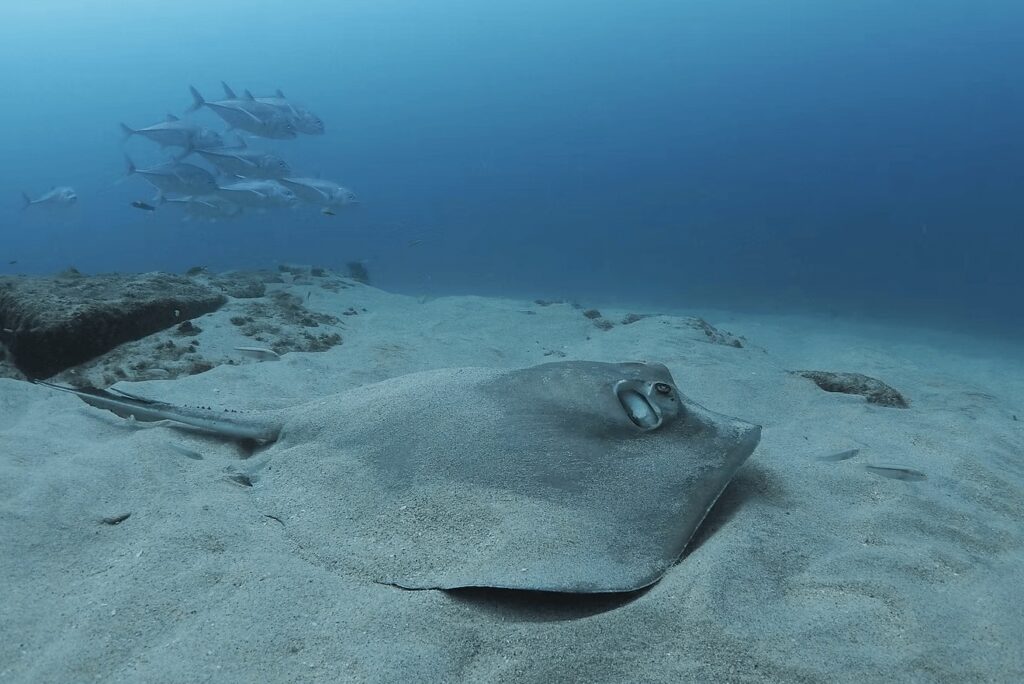
Best time to dive in the Philippines
While you can dive year-round in the Philippines, the dry season from November through to mid-May is best due to the warm weather and minimal rainfall. This makes for ideal surface conditions and enhanced visibility in the water.
March to June is the best time to dive Tubbataha Reefs.
During the wet season from mid-May through to October, many of the Philippines’ best dive sites remain in good condition. You can expect warmer water temperatures and the added perk of fewer crowds.
While typhoons can occasionally occur, particularly from July to September, they are relatively infrequent.
With year-round water temperatures ranging from around 26 to 31 degrees Celsius (79 to 88 degrees Fahrenheit), most divers are comfortable in a 3mm wetsuit.
If you’re scuba diving in the Philippines during the slightly cooler dry season, an extra hoodie or thermal protection is a good idea. It can make for a more comfortable experience, particularly in areas prone to thermoclines.
Bring along a light rain jacket if you’re visiting in the wetter months.
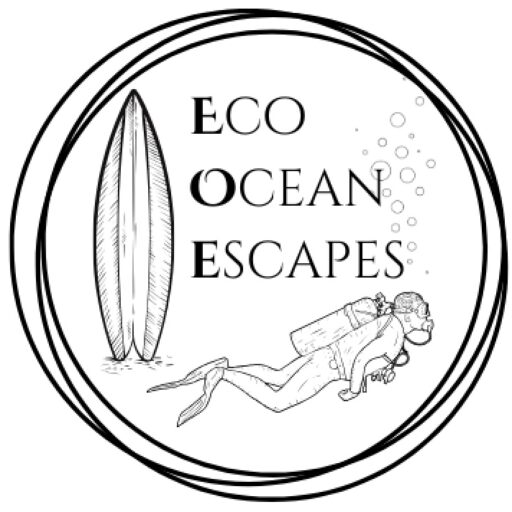
PLAN YOUR TRIP WITH OUR FAVOURITE RESOURCES:
Find hotels and resorts via Booking or Agoda
Book tours and experiences via Viator or GetYourGuide
Find a rental car via Discover Cars
Book flights via Kiwi or Booking
Search for buses and trains via 12Go or Omio
Get travel insurance via SafetyWing
Buy a digital eSIM with Airalo
By purchasing through our links, you’ll be supporting our website at no additional cost to you
About the authors
We are a team of passionate divers and surfers with decades of combined experience in the water and travelling to all corners of the globe. After years of chasing waves and descending into the deep blue, we’ve created this resource to highlight sustainably run surf camps, eco-friendly dive resorts and conservation-focused ocean trips to help inspire your next adventure.
Eco Ocean Escapes was born out of a love of the ocean, an obsession with travel and a concern about the impacts of our adventures on the environments we explore. Despite the benefits that surf and dive tourism can bring to local communities, we recognised that ocean-based adventures are not always managed in a sustainable manner.
Through our articles, we hope to inspire those seeking a responsible surf or dive trip that is all about supporting local communities, preserving our coastal environments and the incredible marine species that inhabit our oceans.
-
Sustainable Surf Tourism and Respecting Local Communities
Surf tourism has exploded over the last two decades. With travel becoming more accessible and social media exposing hidden spots, once-remote breaks in Indonesia, Central America, Morocco and the Pacific Islands are now iconic stops on global surf circuits. While surf travel brings income, jobs and global attention to coastal towns, it can also disrupt…
-
Inspiring Citizen Science Projects for Surfers + How to Get Involved
As surfers, we are intimately connected to the ocean – its rhythms, its wildlife and its health. Because of this relationship, many of us are looking for meaningful ways to protect the marine environments we love. One of the simplest and most impactful ways we can do this is by joining citizen science projects. These…
-
Understanding Marine Protected Areas (MPAs): Why divers should care
If you’ve spent time underwater (as a diver or snorkeller), you’ve probably noticed something: not all sites are beacons of health. Some reefs appear vibrant and full of life, while others show signs of stress – broken coral, few fish or algae-covered rocks. One of the biggest factors shaping the health of our oceans is…
-
Costa Rica: Best Marine Parks for Scuba Divers + Eco Dive Resorts
Costa Rica is a paradise for eco-conscious travellers and underwater explorers are no exception. With its healthy coral reefs, pelagic-rich waters and some of the most progressive environmental policies in the world, the country is a dream destination for those who want to dive responsibly. We’ve been lucky enough to visit Costa Rica several times…
-
Eco-Diving: Best Destinations for Sustainable Scuba Travel
As humans inspired by the underwater world, there is plenty of incentive to protect our coral reefs. Here at EcoOceanEscapes, we want to do our bit to save endangered marine species and keep our oceans free of trash. One impactful action we can all take is to choose sustainable diving destinations. These are nations (or…
-
Eco-Friendly Diving: How to Be a Sustainable Scuba Advocate
Understand the environmental impacts of diving and sustainable scuba practices in this comprehensive guide to eco-friendly diving. Any diver will tell you that being underwater is an incredible experience. It’s a world that not everyone has the opportunity to explore and the encounters we have with marine creatures can be life-changing. Watching manta rays soar…

We are a team of passionate divers and surfers with decades of combined experience in the water and travelling to all corners of the globe.
After years of chasing waves and descending into the deep blue, we’ve created this resource to highlight sustainable surf camps, eco-dive resorts and conservation-focused ocean trips to help inspire your next adventure.
Eco Ocean Escapes was born out of a love of the ocean, an obsession with travel and a concern about the impacts of our adventures on the environments we explore.
